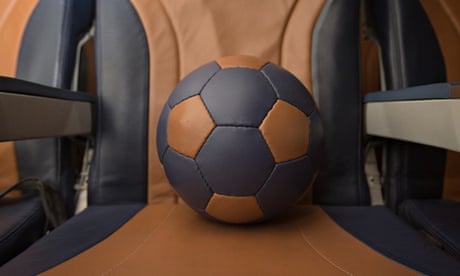What would you do if you found yourself with 80,000 leather aeroplane seat covers that you needed to dispose of? That's the situation in which Southwest Airlines, America's largest budget carrier, found itself recently, when it decided to replace all its leather seat coverings with others made from a durable lightweight material.
The change was aimed at reducing weight – 600 lbs per plane – and thus fuel. Reduced fuel consumption, of course, benefits the environment, but putting 80,000 leather coverings into the incinerator certainly doesn't. It's not just the fact that the leather coverings would be adding to the waste stream: preparing new leather for products from shoes to handbags consumes vast amounts of natural resources.
So Southwest joined the international upcycling trend. Partnering with upcycler Looptworks in Portland, Oregon, the airline will turn a portion of its leather seats into tote bags, duffle bags and backpacks that the airline will buy back to to use as gifts at events.
"The water conserved by making goods using old leather rather than virgin leather is enormous," says Looptworks co-founder Scott Hamlin. "For each bag, 4,000 gallons of water is saved. In addition, there's a CO2 reduction of up to 82%."
Looptworks specialises in upmarket products. "We ask ourselves the question, is this product something that a person would buy regardless of where it came from," says Hamlin. "We sell the product first, not the story. In the purchasing moment, even the people who are most committed to environmental and social causes will put the product's look first, not its story."
For that reason, coupled with the fact that upcycling is quite costly, has turned the process into a relatively high-end niche. Looptworks, which has previously made iPad covers, is partnering with Apple on the tech giant's new iPad sleeves. Looptworks backpacks upcycled from clothes sell for $50 and iPhone leather wallets for $55. As Hamlin explains, "in many cases, unfortunately, the cost of creating the upcycled material is higher than the value of the material itself. The best way of recovering the costs is by creating an upscale product."
The variations on upcycling are endless – from clutch bags made from bottle caps to bicycle chain mirror frames. The common denominator is that the products cost quite a bit more than the rubbish they're keeping out of the landfill. And it's a lot of rubbish. According to the company Reuseit, Americans alone throw away 1,600lbs (726kg) of rubbish per person per year. In a project similar to Looptworks' collaboration with Southwest, Worn Again has turned Virgin aeroplane seat coverings into handbags and Eurostar uniforms into train manager bags.
As part of its LUV Seat project, Southwest is partnering with SOS Children's Villages in Kenya to teach youth leatherworks using the discarded leather covers. The Dallas-based carrier is also partnering with Kenyan social enterprise Alive and Kicking to make footballs from the seat covers, and with local footwear company Masai Treats to make more than 2,000 pairs of shoes. In Malawi, the airline is helping to fund a school that will also teach its pupils leatherworks. "We wanted to find organisations that would help us do social good," says Southwest's senior manager of culture and communications, Marilee Mcinnis.
However, Esben Alslund-Lanthén, a research analyst at Copenhagen thinktank Sustainia and editor of its Sustainia100 toplist on sustainability innovation, warns that without a steady supply of material, projects like the Kenyan footballs may not be viable.
"After the leather seat coverings have been used, [the manufacturer] has to find a new source of material," he says. "The main issue with an initiative like this is whether you can go beyond a particular source without disruption." Otherwise the production – whether in Kenya or the US – may slow down or grind to a halt while suitable new rubbish is identified.
And, says Alslund-Lanthén, upcycling doesn't necessarily have to result in upmarket products. It can simply be an effort to remove items such as, say, plastic bottles, from the waste stream. Patagonia, the outdoor retailer, has a programme turning such plastic bottles into fleece jackets.
In reality, however, the upmarket segment holds the most upcycling potential. Atlantic Leather, a young Icelandic company, has turned the waste stream completely on its head by turning fish skin – an item always headed straight for the skip – into leather for luxury shoes.
In the future, predicts Hamlin, legislation – for example a carbon tax passed on to consumers – will provide an incentive for shoppers to opt for upcycled products. But in the meantime, carrying an aeroplane-seat tote bag while wearing fish-leather shoes doesn't sound too burdensome.
The circular economy hub is funded by Philips. All content is editorially independent except for pieces labelled advertisement feature. Find out more here.
Join the community of sustainability professionals and experts. Become a GSB member to get more stories like this direct to your inbox

Comments (…)
Sign in or create your Guardian account to join the discussion